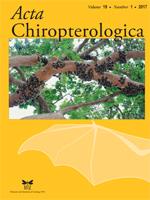Conventionally, bat roost counts and roost size estimation are potentially a disruptive, repetitive method and are time consuming. Introduction of the Light Detection and Ranging (LiDAR) scanning system, an optical remote sensing technology, for scientific purposes have open many research possibilities especially on cave wildlife surveys. Scanned images at high resolution provide new effective biological tools for assessing bat roosts inside caves on walls or ceiling in total darkness. LiDAR system was applied to census bats that roost in Wind Cave Nature Reserve, Sarawak, Malaysia, based on laser return intensity values from the images. Bats that roost in large clusters, specifically Penthetor lucasi were determined through automated counting using connected components labelling, a graph theory algorithm mostly used in image analysis applications. Roost surface area of bats species was calculated based on point clouds extracted and using simple trigonometry. Wind Cave was successfully modelled into three dimensional (3D) cave images with bats roosting inside the cave. The roost sites of bats in the cave were represented in coloured point clouds that represent the species. Through LiDAR images, bats in Wind Cave consisted of about 979 individuals of P. lucasi and 1,907 individuals of insectivorous bats from nine species representing four families. There is a positive correlation between group size and roost area. For every additional bat, roost area is expected to increase by an average of 1.75 m2. Our result suggested that terrestrial LiDAR technology is capable of assessing bat roosts in their natural habitat to determine their roost size and number of individuals that roost in the cave. Terrestrial LiDAR application is most complementary when integrated with field surveys to produce more reliable outcomes which open up possibilities of effective conservation action plans.
How to translate text using browser tools
1 June 2017
Assessing Bat Roosts Using the LiDAR System at Wind Cave Nature Reserve in Sarawak, Malaysian Borneo
Nursyafiqah Shazali,
Teong Han Chew,
Mohd Shahir Shamsir,
Roberta Chaya Tawie Tingga,
A. R. Mohd-Ridwan,
Faisal Ali Anwarali Khan
ACCESS THE FULL ARTICLE

Acta Chiropterologica
Vol. 19 • No. 1
June 2017
Vol. 19 • No. 1
June 2017
3D images
cave mapping
Chiroptera
population count
roost pattern
roost survey
terrestrial laser scanning




